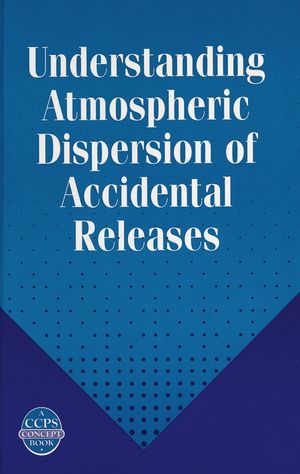Understanding Atmospheric Dispersion of Accidental ReleasesISBN: 978-0-8169-0681-9
Hardcover
58 pages
December 1995
 This is a Print-on-Demand title. It will be printed specifically to fill your order. Please allow an additional 15-20 days delivery time. The book is not returnable.
|
||||||
Nomenclature.
Chapter 1. Introduction.
1.1. Purpose.
1.2. Release/Dispersion Scenario Overview.
1.3. Hazards.
Chapter 2. Meteorology.
2.1. The Atmosphere.
2.2. Turbulence in the Atmosphere.
2.3. Mechanically Generated Turbulence'.
2.4. Vertical Density Stratification and Buoyancy.
2.5. Atmospheric Stability Classifications.
2.6. Similarity Scaling in the Atmospheric Boundary Layer.
2.7. Changes Over Time in the Atmospheric Boundary Layer.
Chapter 3. Source Estimates-Leaks and Ruptures.
3.1. Leaks and Small Holes.
3.2. Phase Changes in Released Fluids.
3.3. Aerosol Formation in Liquid of Flashing Liquid Releases.
3.4. Transient Vessel Inventory Loss.
3.5. Catastrophic Vessel Failures.
Chapter 4. Sources-Liquid Pools.
4.1. Boiling Liquid Pools.
4.2. Evaporation of Volatile Liquids.
4.3. Evaporation of Relatively Nonvolatile Liquids.
4.4. Multicomponent Mixture Spills.
Chapter 5. Buoyant and Dense-Gas Jet Releases.
5.1. Jet Length Scales.
5.2. Momentum and Buoyancy.
5.3. The Effect of Wind and Ambient Turbulence.
Chapter 6. Low-Velocity Dense-Gas Releases.
6.1. Source Specification.
6.2. Source Area Region.
6.3. Stably-Stratified Region.
6.4. Passive Dispersion Region.
Chapter 7. Passive Dispersion.
7.1. The Mechanics of Turbulent Dispersion.
7.2. Passive Dispersion from Elevated Releases.
7.3. Near-Ground Passive Dispersion.
7.4. Dispersion Averaging Times.
Chapter 8. Complex Flow Considerations.
8.1. Building Wakes and Stack Downwash.
8.2. Gravity-Driven Flows and the Effects of Terrain.
8.3. Aerosol Rainout.
8.4. Fanning Plumes and Subsidence.
Chapter 9. Hazard Evaluations.
9.1. Chemical Toxicity.
9.2. Flammability.
Chapter 10. Computer Models.
References.



